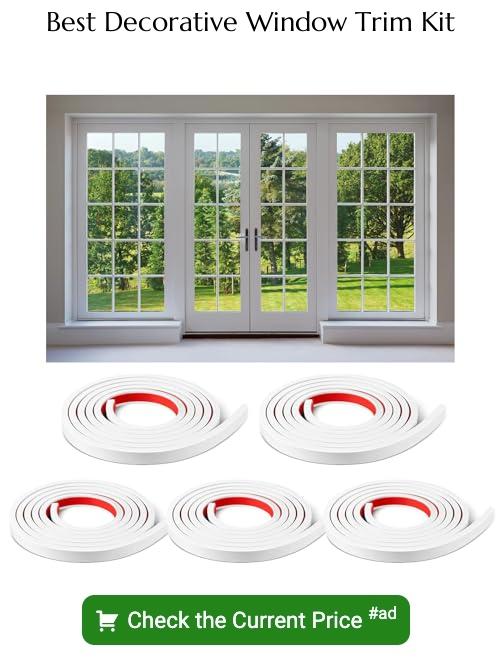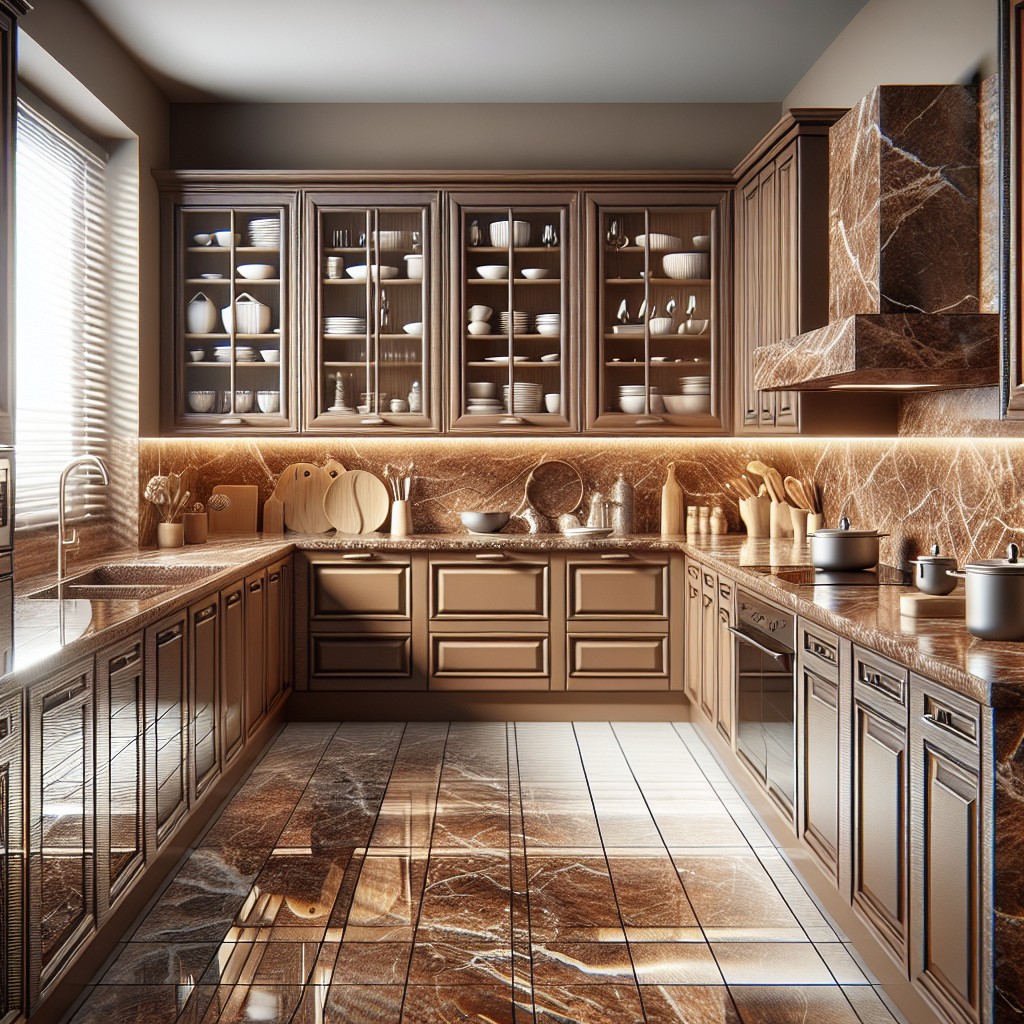Last updated on
Explore the transformative power of flat stock window trims because these understated architectural details can instantly elevate the aesthetics of any room.
These are my unique design concepts made using design tools. I hope you find them inspiring!
A realm where creativity meets utility is the world of window trims, where a simple touch of flat stock can transform your spaces.
While there is no shortage of conventional ideas on the web, there’s always a thrill in exploring new, unique angles to familiar elements.
Buckle up, as we amplify the essence of window trim style with some fresh, unique, and undiscovered ideas – ones which promise to resonate with your aesthetic senses.
Stick till the end for interesting resources for mastering existing ideas.
But now, let’s embark on this journey, featuring flat stock window trims with a twist!
What's Inside
Contemporary Trimless Windows
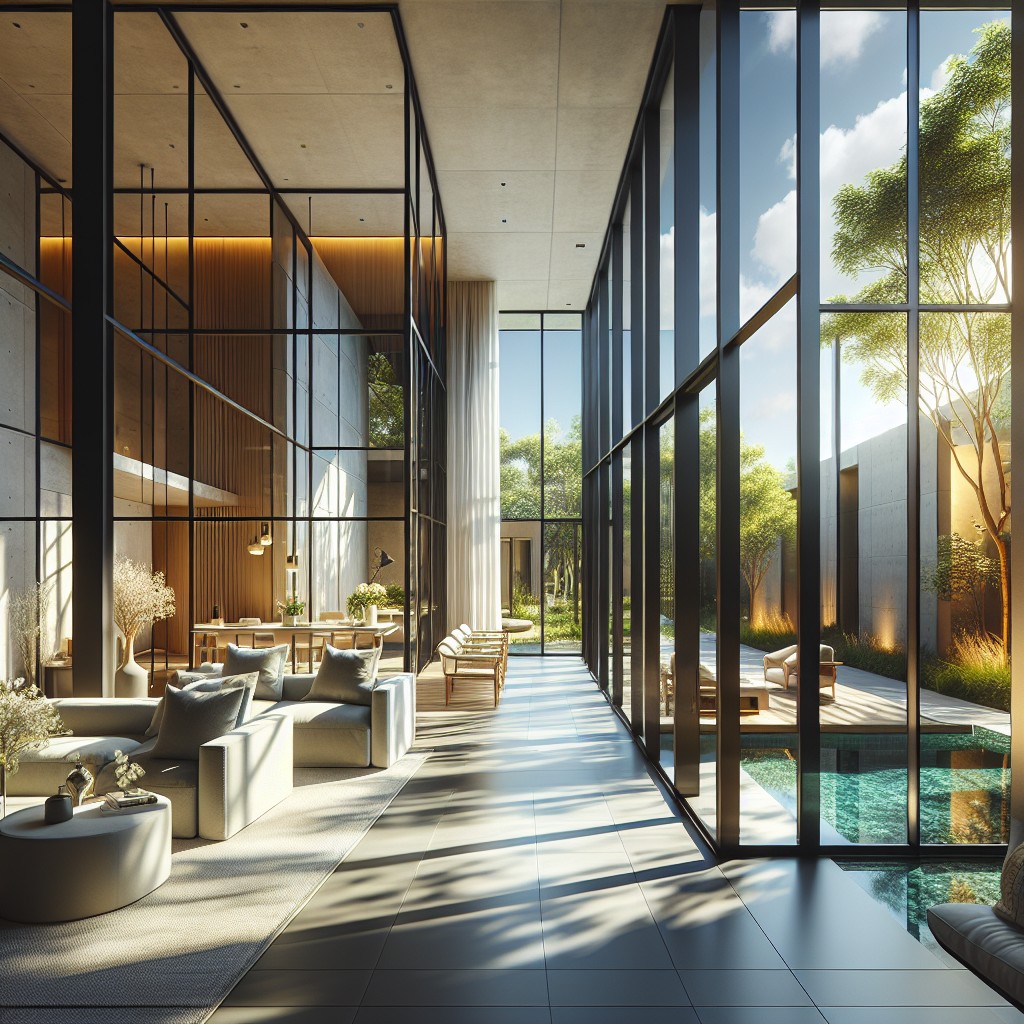
Trimless windows elevate the modern, sleek feel of a contemporary design. Simplicity is central to their appeal, focusing on clean lines and uncluttered visuals. Notably, the window and wall blend seamlessly which enhances the flow of natural light.
Installation largely depends on the use of a jamb extension attached directly to the window, concealed by drywall for an unbroken surface. For this, precise drywalling skills and a keen eye for alignment and finishing are essential.
Another concept is opting for black or charcoal gray window frames. This choice not only provides an eye-catching contrast but also underscores the architectural geometry. Pairing neutral color schemes with these windows achieves a minimalist, chic aesthetic.
Remember, energy-efficient triple or double-glazed panel windows synergize functionally with this design. This approach ensures coveted natural illumination while promoting energy economy.
For perfect harmony, consider decor that echoes this minimalist ethos — floating shelves, streamlined cabinetry, and carefully chosen monochromatic art pieces. Ultimately, the resulting impression is spaciousness and well-curated simplicity.
Colonial Revival Window Style
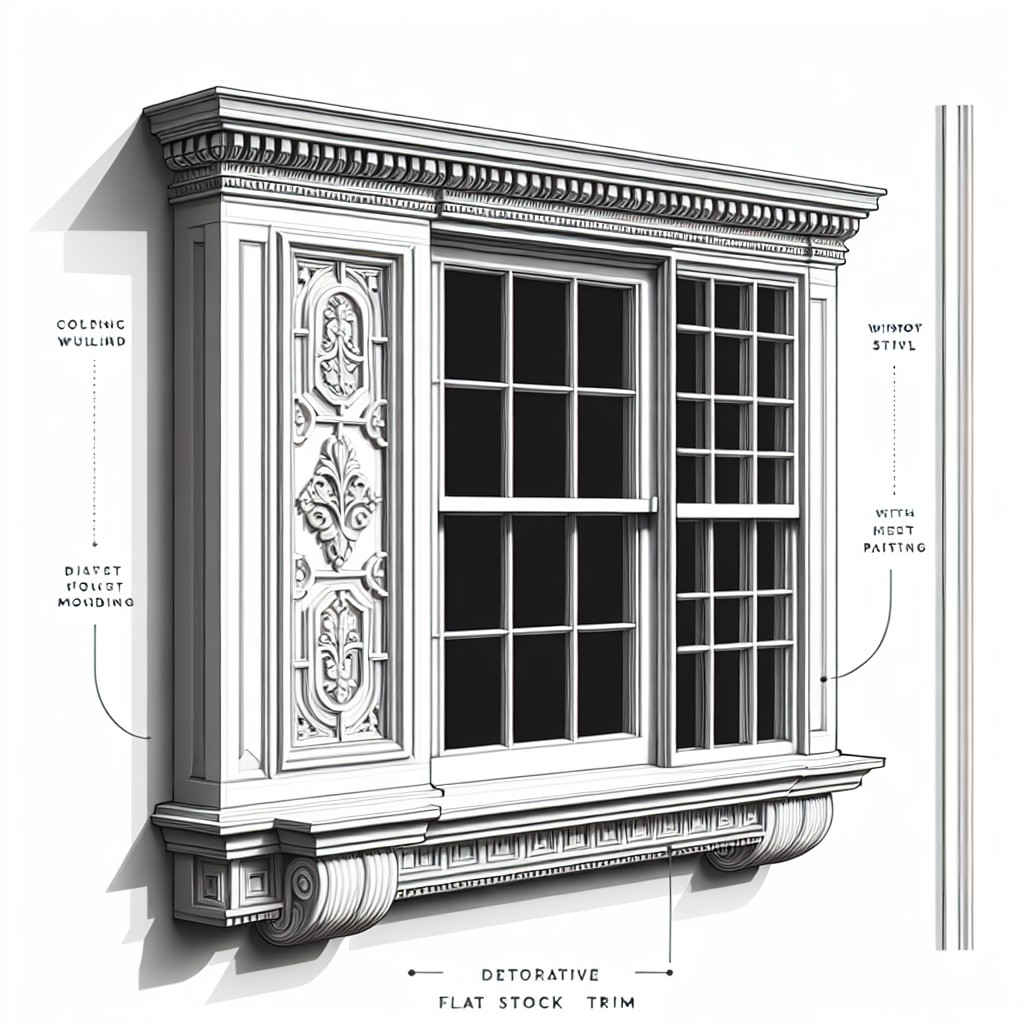
Influenced by the early American era, the Colonial Revival Style showcases symmetry and elegance. This style typically involves a simple, flat trim with structured corner blocks. It features strong, clean lines that can be scaled up or down based on the size of your window.
As this style is typically painted, your choice of color can greatly influence the overall look. For a classic approach, consider a crisp white. If you wish for a more modern twist, a sleek black or a bold color can create stunning contrast.
Notice that this trim style often extends all the way to the window sill, making the sill an integral part of the aesthetic. Opt for a traditional sill or a stool and apron for added flair.
Maintaining this style’s principles, customization can be as simple as juxtaposing the window trim color with the wall, infusing the space with your unique character while preserving the colonial revival’s timeless appeal.
Craftsman Inspired Window Trim

Embodying simplicity and functionality, this style factors these values into its design significantly. Starting with a thicker, more substantial window sill, moving upwards we have the side casings, typically flat boards of equal width. The top cap, or head casing, is the standout piece in this setup, often wider and bulkier than the side casings, sometimes even layered for added emphasis.
To recreate this look, opt for wood as the material of choice for a more authentic feel, which is part of the charm Craftsman style draws. Staining the wood can give a rich, natural effect, or you can paint it to match your chosen color palette.
When considering this design, remember that Craftsman window trim can suit a variety of home styles beyond just a Craftsman style house, scoring high in versatility. Its classic appeal has made it a favorite for homeowners for generations.
Farmhouse Style Trim With Distressed Paint
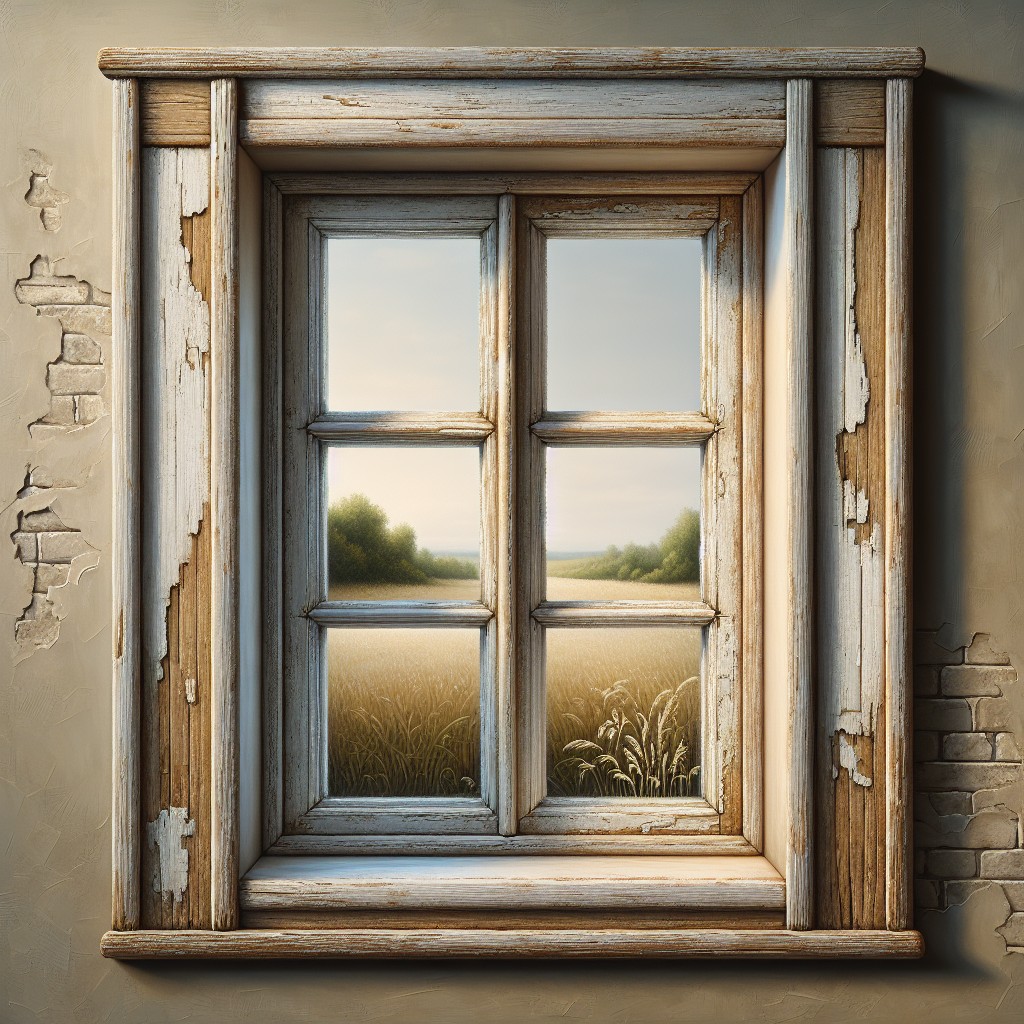
Keeping in tune with the essence of rustic and cozy, this style is marked by simplicity, yet with an irresistible charm. Thick, chunky pieces of wood painted in muted, neutral colors often serve as both the sill and casings. The paint is then sanded slightly to reveal the wood underneath, creating a ‘distressed’ or ‘weather-worn’ finish.
Key Points:
- 1. Use a wide, flat piece of wood for sill and casing.
- 2. Neutral, often white, paint hues are standard, though pastels can add a unique twist.
- 3. Sanding the painted wood to achieve a worn-out look should be done with care to avoid over-sanding.
- 4. Augmenting the trim design with traditional farmhouse elements, such as antique iron nails, can enhance authenticity.
- 5. Pairing with matching distressed furnishings or wall decor can create a cohesive interior design scheme.
Window Trim With Decorative Rosettes
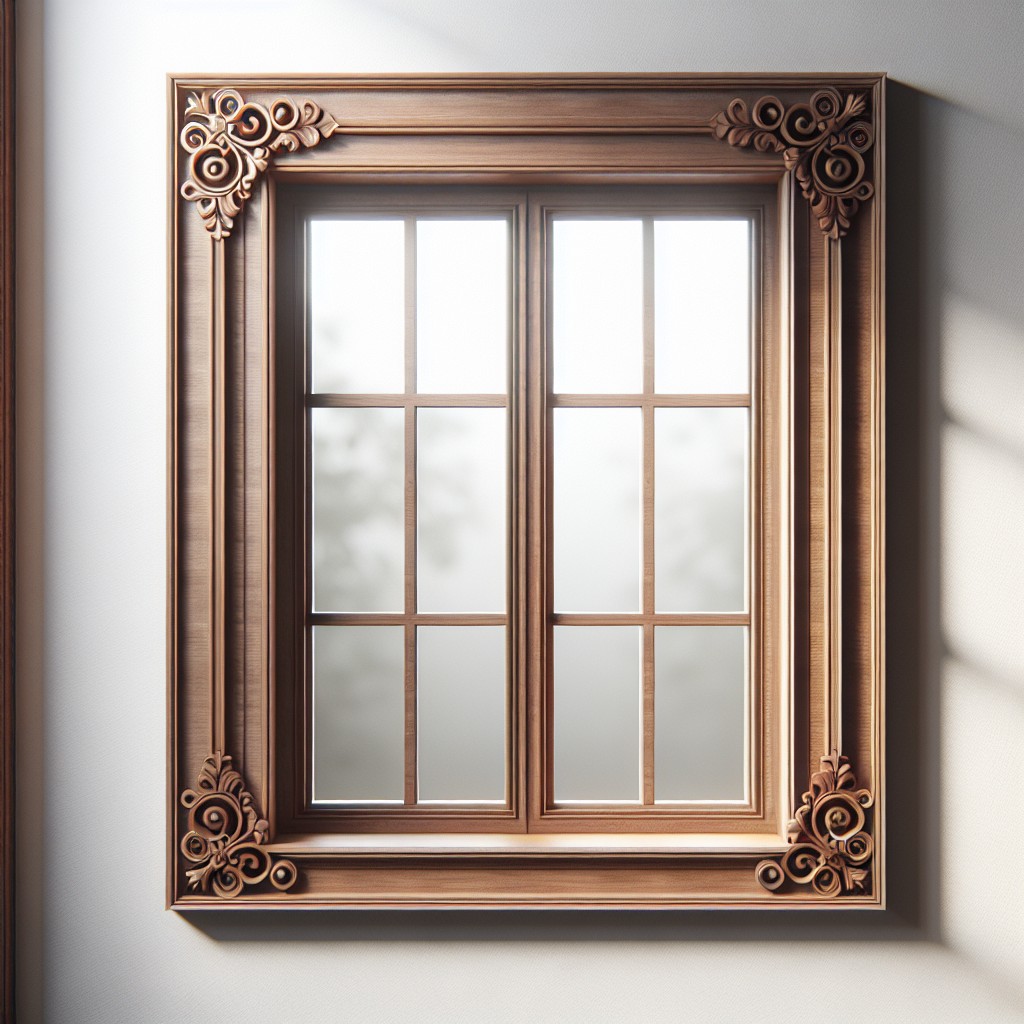
When going for an elegant and sophisticated look, incorporating decorative rosettes into your window trim design can be a perfect match. Rosettes are small, usually circular, decorated designs that work beautifully in the corners of the window trim, adding a unique character to both the windows and the room.
Here are a few points to ponder:
- Material: Traditionally made of wood, rosettes are now available in various materials such as MDF, PVC, and polyurethane. Choose one that aligns with your room decor and maintenance preferences.
- Designs: While classic rosettes feature intricate patterns, modern versions offer minimal and crisp designs.
- Incorporation: When incorporating rosettes, ensure their size and prominence match with the overall window size and room decor. Too large rosettes may overshadow the window itself, while too small might be imperceptible.
- Finishing Touches: Rosettes can be painted to match the trim, contrasted for a standout touch, or left natural to bring a rustic look.
Remember, balance and moderation are key to incorporating rosettes tastefully.
Colorful Window Trim for a Quirky Aesthetic

Having a splash of color on your window trims can dramatically transform the aesthetic of your home. This approach is especially beneficial in monochromatic or neutral spaces, where it creates a fun element of surprise.
Firstly, consider the mood and vibe you desire to instill. Bright, bold colors such as sunny yellows or vibrant pinks can induce an uplifting, energetic feel. More subdued hues such as pastel blues or greens tend to create a calming, serene atmosphere.
Then, think about the palette of your room. The color of the window trim does not need to be the same as the walls. Instead, pick a color which either complements or provides a stark contrast for an impactful statement. Look at art, nature, or fashion to find unique color inspirations.
Lastly, the finish of the paint plays a considerable role. A glossy finish reflects light, which can make the color appear more vibrant. On the other hand, a matte finish gives a more modern, sophisticated look.
The beauty of this design is its versatility and easiness to change if you desire another look. Just repaint the trim and you have a brand new room ambience.
Shaker Style Window Trim
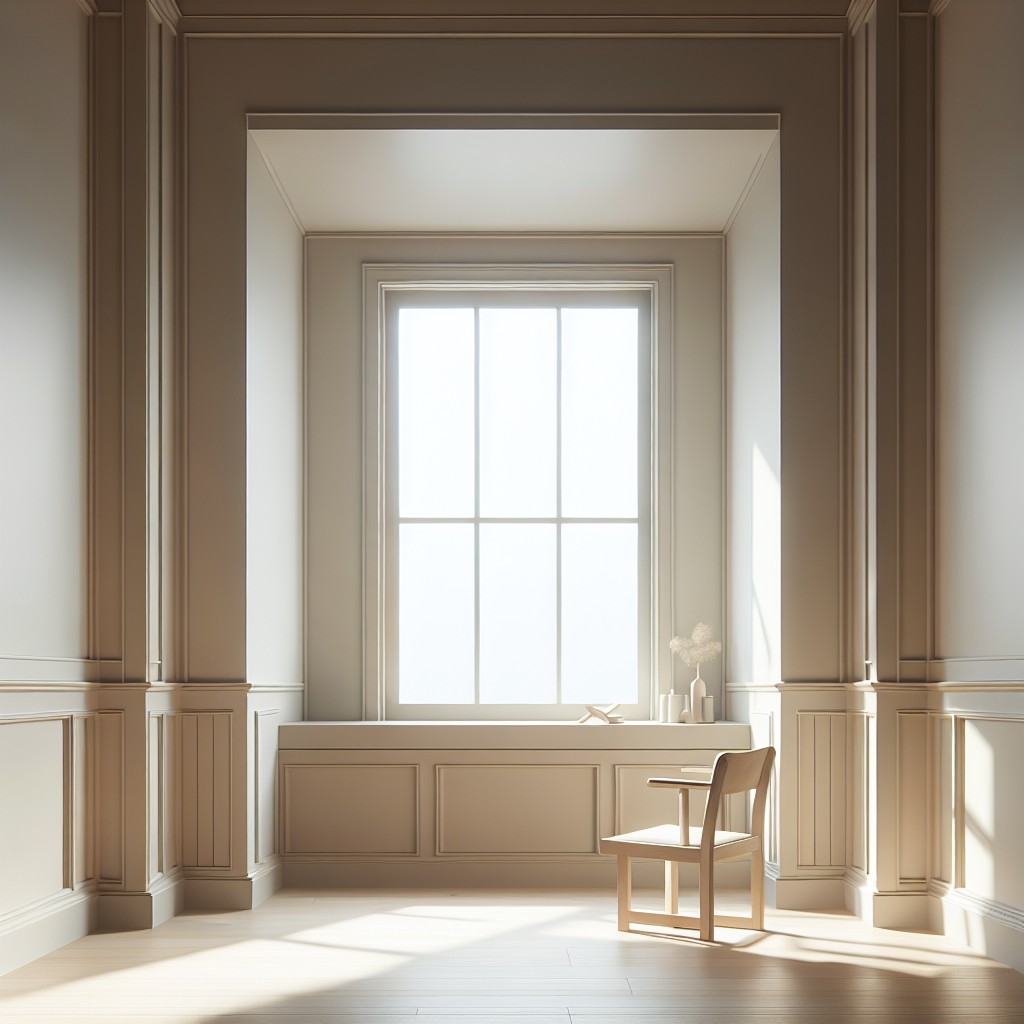
Shaker Style, characterized by its simplicity and functionality, has always been a popular choice for window trim. To achieve this look, a straightforward design with flat, clean lines is key. A combination of a flat casing, a basic sill, and a minimal cap forms this style.
For materials, paint-grade wood is typically chosen due to the simplicity of its appearance, aligning with the Shaker aesthetic. The color scheme traditionally remains muted, often in shades of white or light gray, encouraging a serene and tranquil atmosphere. Keep in mind, when implementing Shaker Style Window Trim, the focus isn’t on ornamentation, but rather on precision, craftsmanship, and the overall balance it brings to a room’s decor.
For those valuing practicality and understated elegance in their decor, Shaker Style Window Trim provides a timeless addition that effortlessly meshes with various interior design styles.
Natural Stone Window Trim
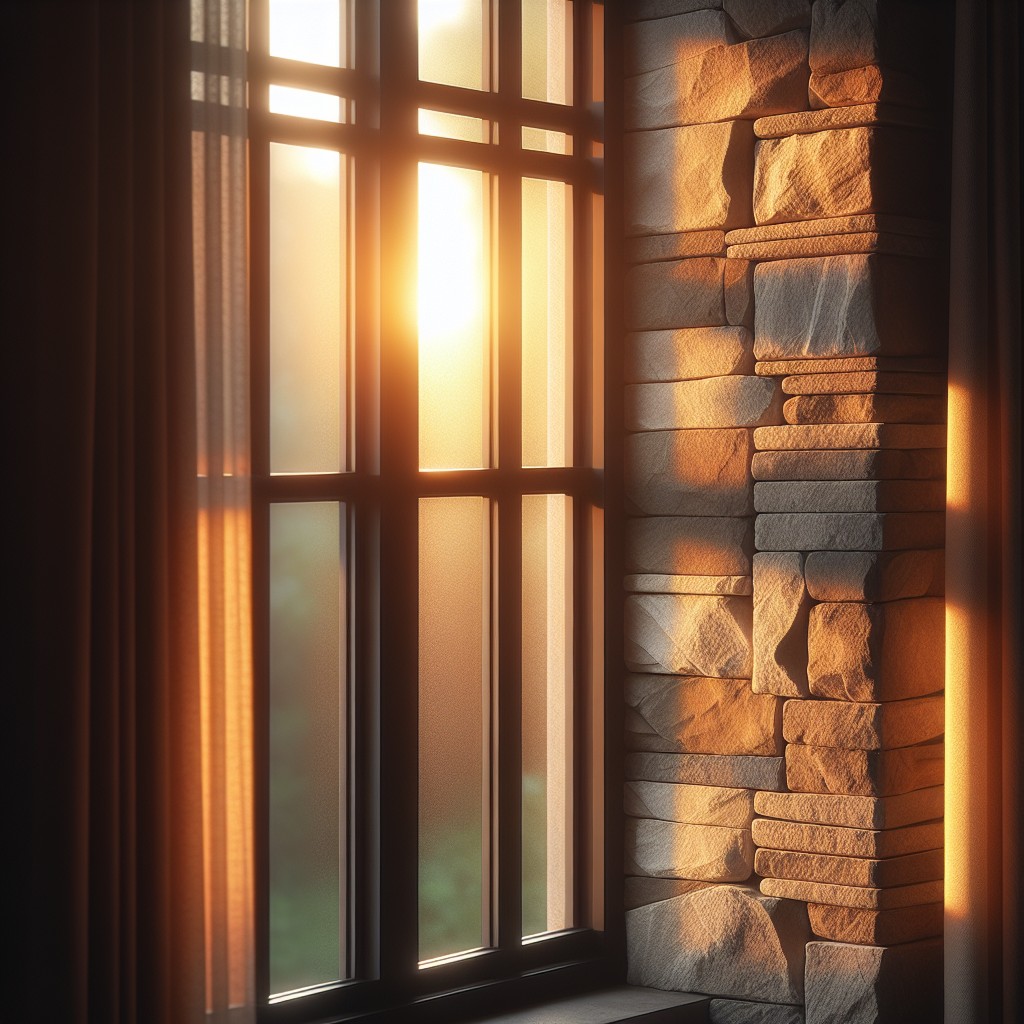
Natural stone, known for its durability and timeless appeal, provides an interesting alternative for window trims. It exudes a luxurious look and is ideal for homes designed with a rustic or minimalist theme.
Using natural stone as window trim requires a well-planned installation process. While weight can be an issue, addressing it with the right supportive structure counters this concern.
As for the types of stones, limestone and granite are common choices due to their unassuming yet sophisticated aesthetic. However, if you prefer a more dramatic look, consider options like travertine or marble.
Maintaining these stone window trims is relatively straightforward. Regular cleaning with mild soap and occasional sealing will keep the stone in top condition, protecting your windows for years to come. Murals or subtle engraved designs can also be added for an extra layer of distinctness.
Remember, the kind of stone you choose can greatly influence the overall impression of your home. Choosing the right one ensures your window trim not only offers protection and functionality but also enhances your home’s curb appeal.
Window Sills As a Key Part of the Trim
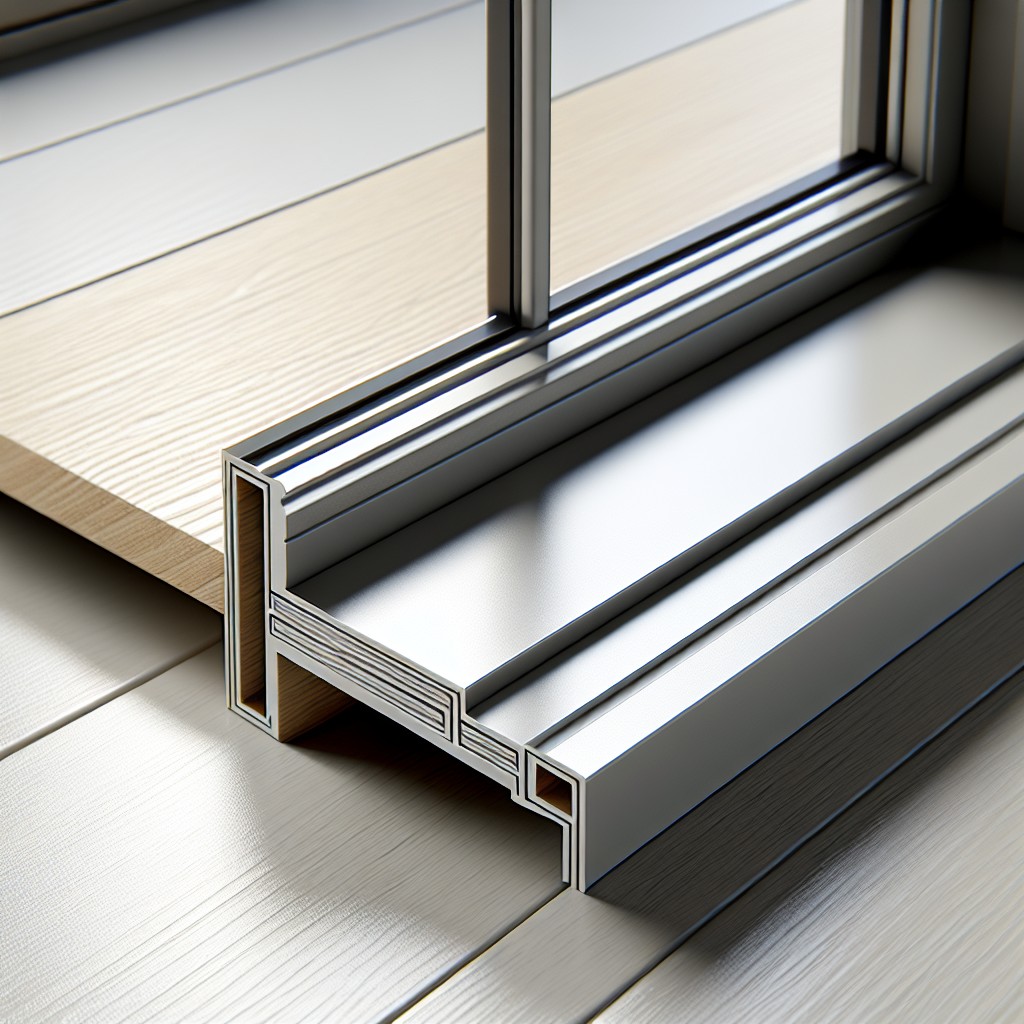
Understanding the essential role of window sills in trim design involves appreciating their function and visual importance.
Functionally, they help in the management of any external water flow, ensuring your home remains dry even in the worst weather. Yet, beyond this, they’re a significant contributor to aesthetic appeal. Sills can add depth and dimension to your windows; the extended ledge can be visually appealing and practical for decorative or storage purposes.
However, to enhance the design, consider the following tips:
- Choose the sill width based on your window size. Larger windows may require a more substantial sill for balance and proportion.
- Think about the material. While wood is traditional, stone or composite materials can add a modern twist and be more durable.
- Consider whether a simple or ornate design fits your home’s style better. Homes with a minimalist aesthetic may benefit from sleek, streamlined sills, while a victorian home might suit a more decorative approach.
- Bear in mind that the sill color can either complement or contrast with your overall window trim color, creating harmonious or dynamic visual effects.
By incorporating these aspects into your sill design, the overall window trim will be greatly enhanced.
Natural, Unfinished Wood for a Bohemian Feel
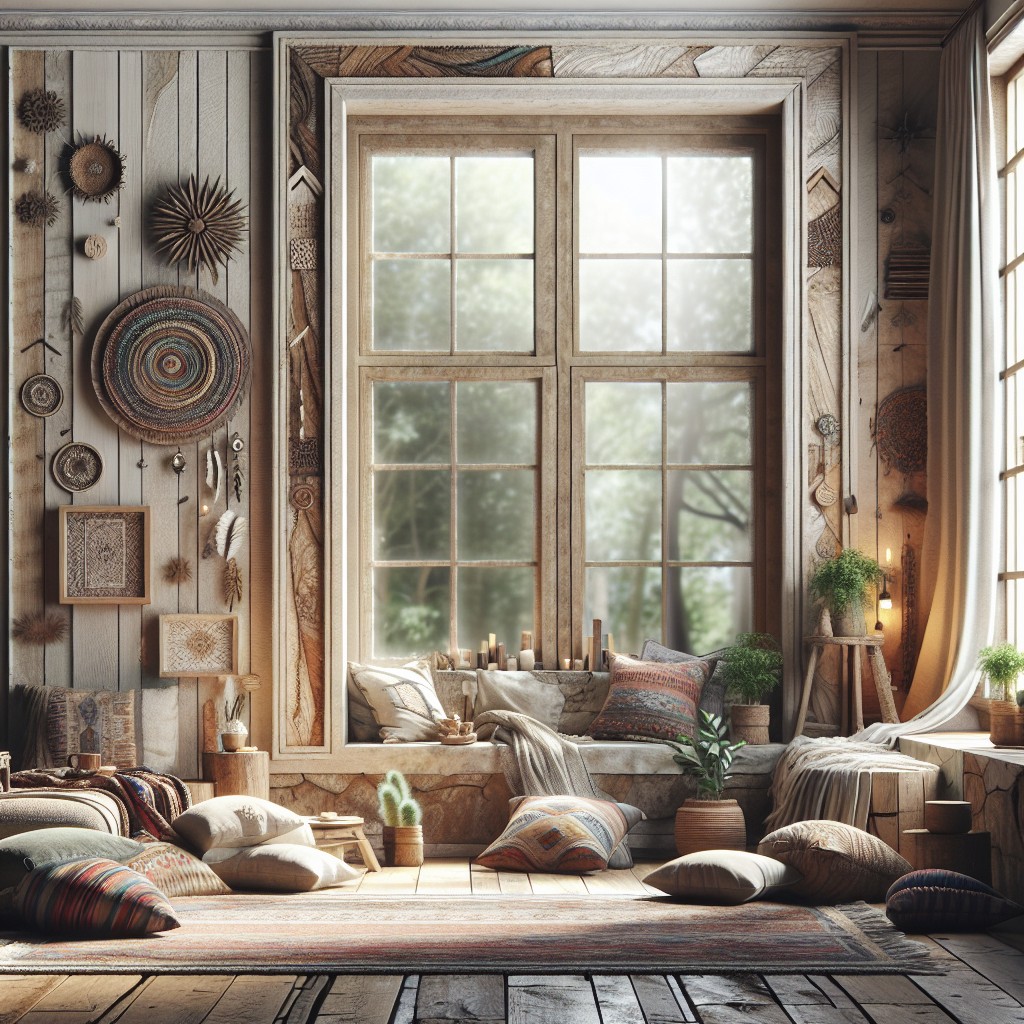
Incorporating natural, unfinished wood as a window trim can significantly enhance the Bohemian aesthetic of your space. The rustic texture and earthy shades of the bare wood add warmth and intimacy, resonating well with the laid-back, free-spirited charm of Boho decor.
Few concepts to keep in mind when implementing this style are:
- 1. Essence of Simplicity: Allow the raw beauty of natural wood to shine without the addition of stains or paints. Polished but unfinished wood offers a sense of rustic simplicity.
- 2. Grain Patterns: Choose wood pieces with prominent grain patterns. This natural art contributes to the Holistic approach boho style swears by.
- 3. Size and Proportion: Opt for wider trim pieces. They make a statement and add rugged lines to your windows, aiding the Bohemian look.
- 4. Integrate with Décor: Make sure the natural tone of wood compliments your existing Bohemian decor. Unfinished grain wood pairs well with neutral tones, rattan furniture, houseplants, and vintage pieces.
In essence, implementing boho-style using natural, unfinished wood as window trim is about embracing and showcasing the raw beauty of natural materials.
Victorian-era Window Trim
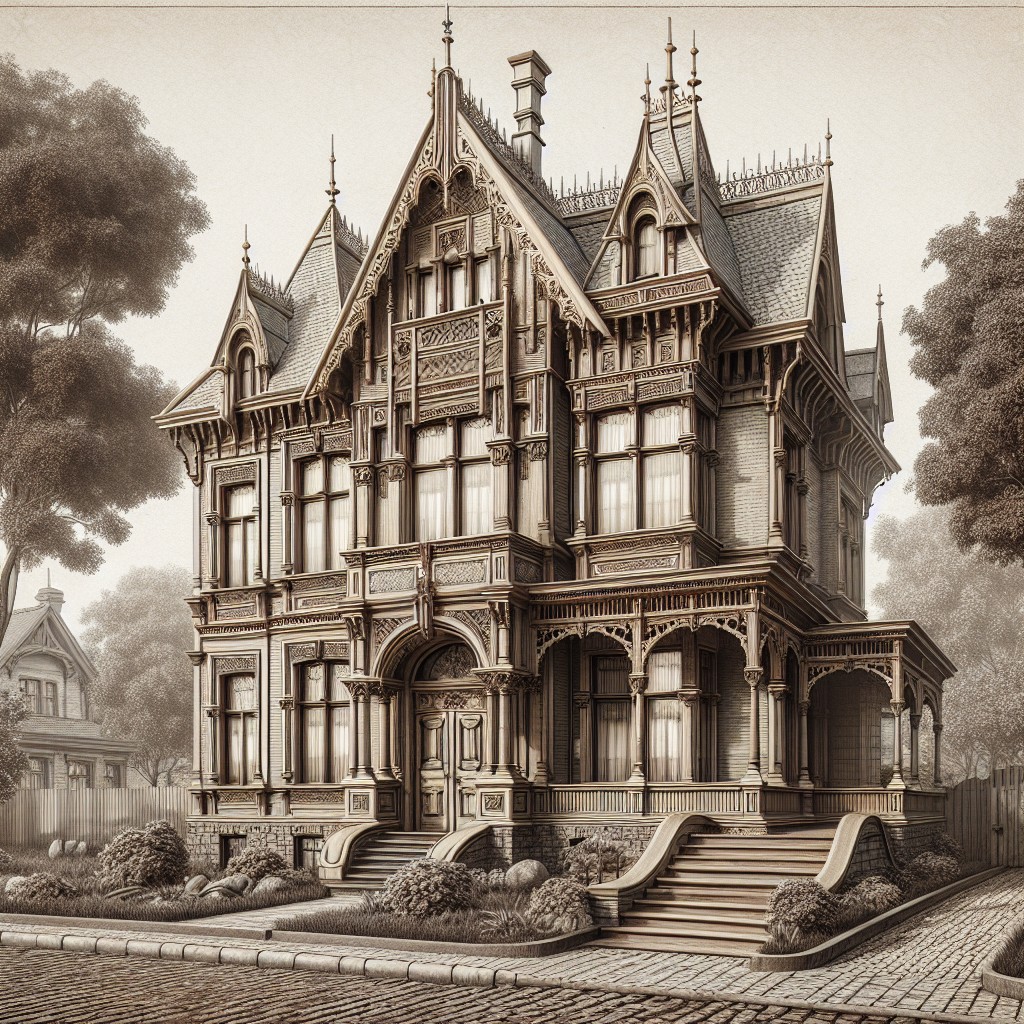
Victorian window trims, distinct for their elaborate detailing, are another worthy consideration for adding a touch of classic grandeur to your home. Here are some key characteristics that define this style:
1. Intricate Designs: Victorian-era features include detailed carvings and mouldings. The aesthetics emphasize elaborate patterns, symbols, and even floral motifs.
2. Layered Trim: Victorian window trims often use layered designs. This typically includes an inner mould, main casing, and a cap moulding. Layering adds depth to the frame, enhancing its overall appearance.
3. Contrasting Colors: The style often uses contrasting colors for the trim and wall, with the trim typically painted a darker shade to create a striking impression.
4. Curved or Angular Styles: Though Victorian trims are commonly angular, curves and arches aren’t uncommon. The choice typically depends on the structure and design of the house.
5. Material: Traditionally, Victorian window trims are made of wood. In modern applications, materials mimicking the look of wood are often utilized for affordability and durability.
These traits can be adapted and toned down to suit modern homes while still retaining the Victorian elegance. Remember, the overall aim is to achieve a harmonious look that complements and elevates the rest of your décor.
Window Trim With Dentil Mouldings
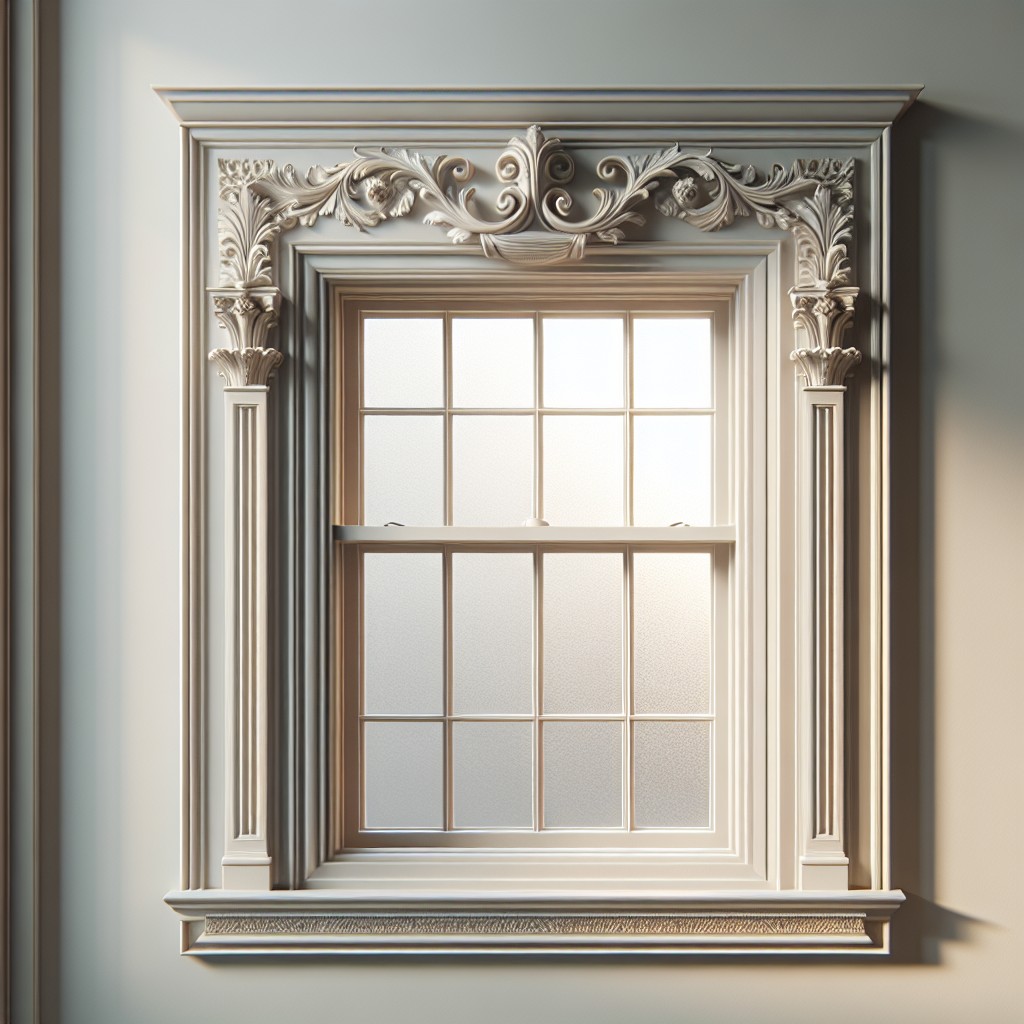
Dentil mouldings bring a classic, ornate touch to your window trim. With their small, block-like pattern, they add visual interest without overwhelming. Ideal for both large and small windows, this design element works wonders in traditional or historical home designs.
Here are some points to keep in mind:
- 1. Dentil mouldings are classic and timeless, ideal for incorporating an air of sophistication into your window design.
- 2. They can be made from a variety of materials, including wood, plaster, or synthetic polymers, providing flexibility in design and budget considerations.
- 3. Despite the pattern’s intricacy, dentil mouldings can be surprisingly easy to install, often arriving in strips that are easily affixed to your trim.
- 4. They pair beautifully with other traditional architectural elements, such as crown moulding or chair rails. Experiment with combinations to find your perfect aesthetic.
- 5. Keeping colors simple allows the dental pattern to stand out. Simple shades like white, cream, or taupe are frequently employed for this reason.
Remember, while dentil mouldings have a distinct look, the ultimate design of your window trim is up to you – mix and match features to create a window look that suits your unique style.
PVC Window Trim for Sustainability
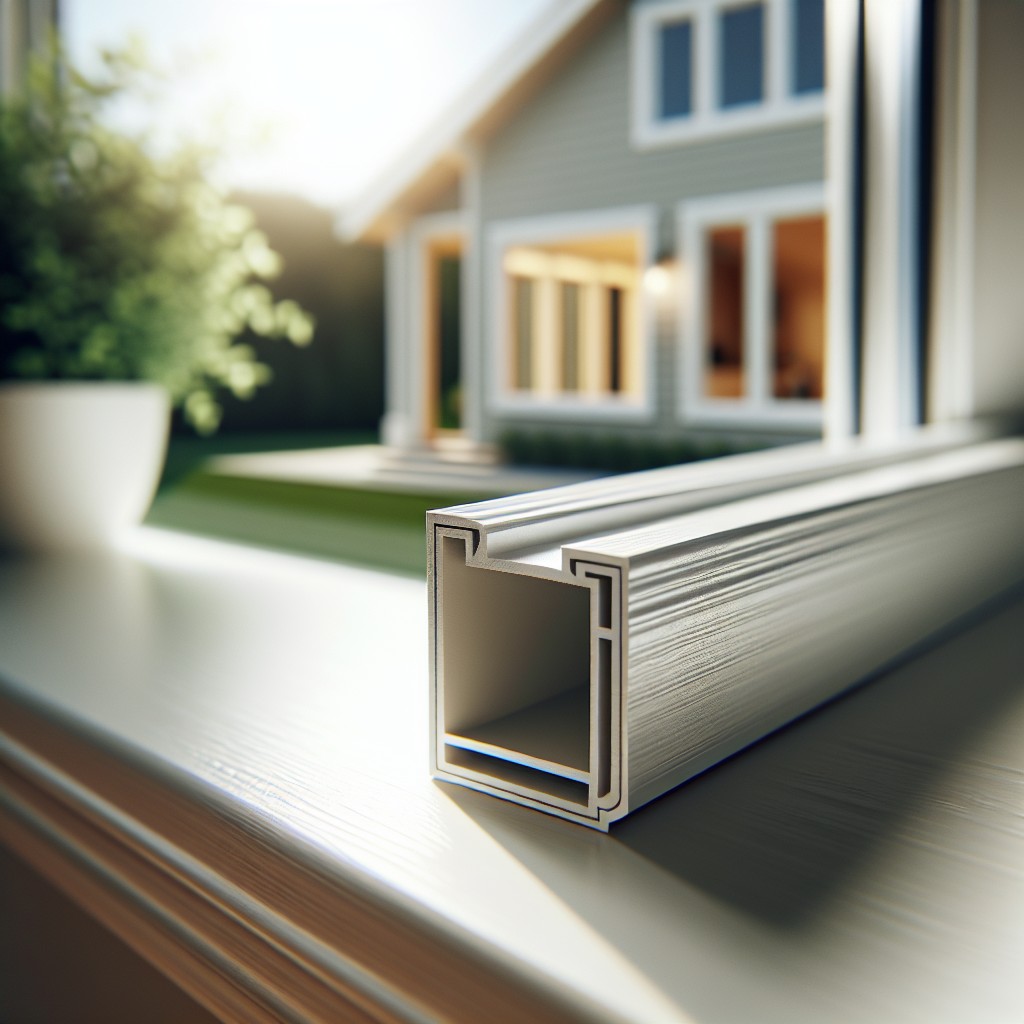
The beauty of PVC (Polyvinyl Chloride) as a material for window trim lies not only in its sleek aesthetics but also in its sustainable character. Chiefly, PVC can be recycled multiple times without losing its essential properties, reducing environmental impact.
Another advantage is its low maintenance requirement. Unlike wood which may warp, rot, or require regular painting, PVC stands up against moisture, making it an excellent choice for damp climates. This resilience indirectly promotes sustainability by reducing the need for regular replacements or repairs.
It also offers excellent insulation, thus improving energy efficiency in the house. Good insulation means less use of heating or cooling systems, leading to lower energy consumption.
Finally, in recent years, there is a growing trend of manufacturers producing PVC from bio-based, rather than petroleum-based, ingredients contributing to its eco-friendly factor.
While choice of any home decor element is a blend of personal taste and practicality, PVC window trim brings the additional benefit of sustainability to the table.
Window Trim With Cap Moulding
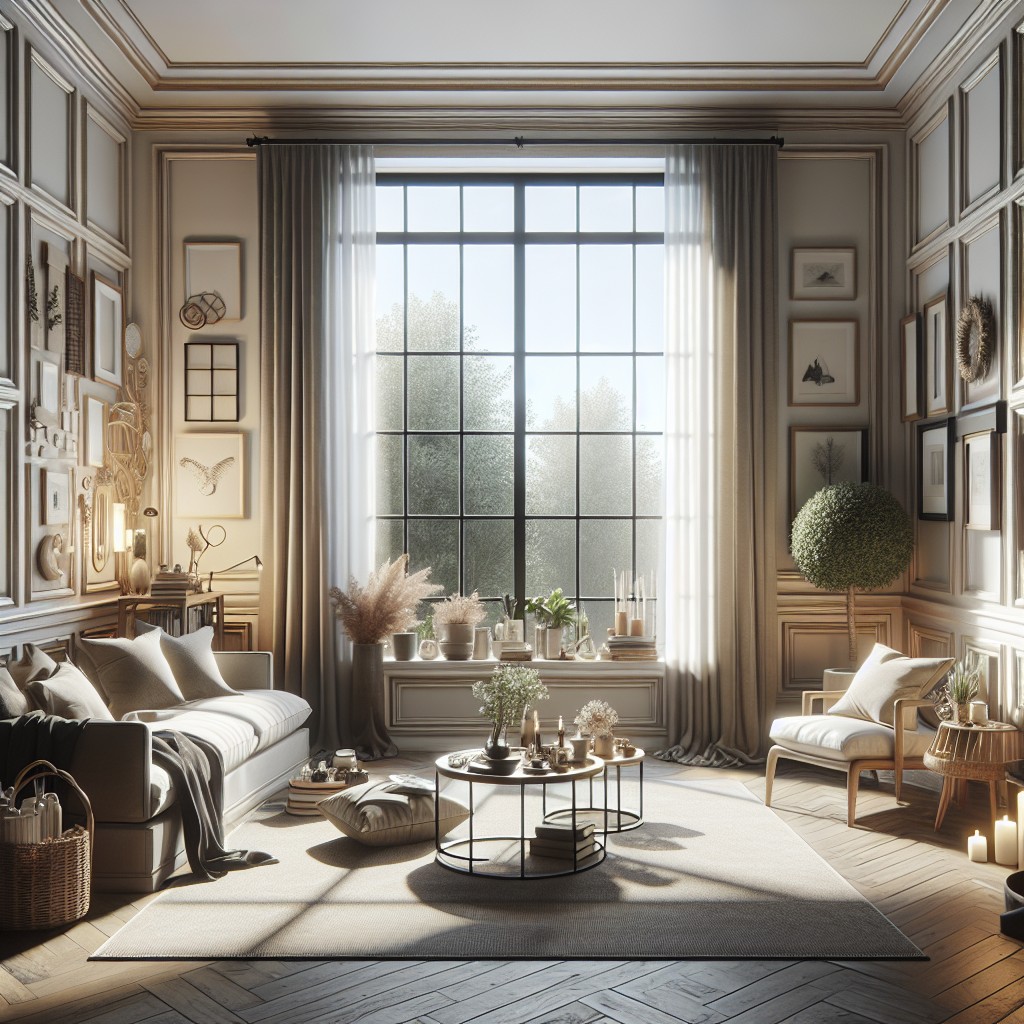
Perfect for traditional style homes, cap moulding adds a splash of elegance and dimension. Essentially, it’s a decorative topping that’s installed above the window trim.
This design element works to bridge the gap between the wall and mend any disjointed visual lines. Players keen on implementing cap moulding should note the following points:
- 1. The cap moulding width should directly relate to the other architectural details—sound proportion is key to seamless aesthetics.
- 2. For a polished appearance, consider a paint color that matches your existing trim. Alternatively, a contrasting color could enhance and define structural elements.
- 3. Quality materials are vital. Typically, hardwoods like oak or cedar are reputable for their durability and fine grain.
- 4. Employ a professional for precise alterations. Particularly large, old, or complex windows might call for expert handling to ensure the cap moulding lines smoothly with the existing structure.
Remember, cap moulding brings a dose of sophistication, tying the room’s aesthetic together with finesse and architectural interest.
Art Deco Inspired Window Trim

Drawing from architecture, fashion, and design aesthetics of the 1920s and 1930s, Art Deco-inspired window trim helps to create a distinctive, stylish look for your living space. Here are few key aspects to keep in mind when considering this design:
1. Geometric Shapes: Art Deco is all about bold geometric patterns. Incorporate these into your window trim for a distinct, modern aesthetic.
2. Metallic Accents: Add an element of luxury with metallic accents in hues like gold, silver, and bronze while keeping the rest of the trim in muted colors.
3. Multilayered Designs: A typical Art Deco trim often features multiple layers. Each layer accents the previous one and gives a perception of depth.
4. High Contrast: Art Deco thrives on high contrast. Think dark trim against light-colored walls or vice versa.
Remember, though Art Deco is a specific style, it’s just as versatile. Feel free to improvise on these points according to your taste and overall home decor.
Window Trim In Harmony With Crown Moulding

Considering the design continuum of your space is essential when incorporating window trim to blend smoothly with crown mouldings. While the trim around windows adds visual interest, tying it in with your ceiling embellishments is important for a cohesive look.
Here are some tips:
- Match Materials: It ensures a uniform aesthetic. Use the same wood type, paint finish or stain color.
- Align Styles: Choose moulding profiles that complement each other. A complex, ornate crown moulding pairs well with similarly detailed window trims.
- Consistency in Dimensions: There’s no hard rule, but as a guide, your window trim should be 50-75% the width of your crown moulding.
- Incorporate Transition Elements: If your trim and crown moulding differ significantly, consider transitional pieces. These are typically simple profiles that provide a visual ‘bridge’.
- Consider Room Function: Kitchens and bathrooms may require more durable materials, while living areas afford more decorative freedom.
Utilizing these design principles will result in a harmonious interplay between your window trim and crown moulding, enhancing your room’s overall appeal.
Stucco Window Trim for Spanish Style Homes
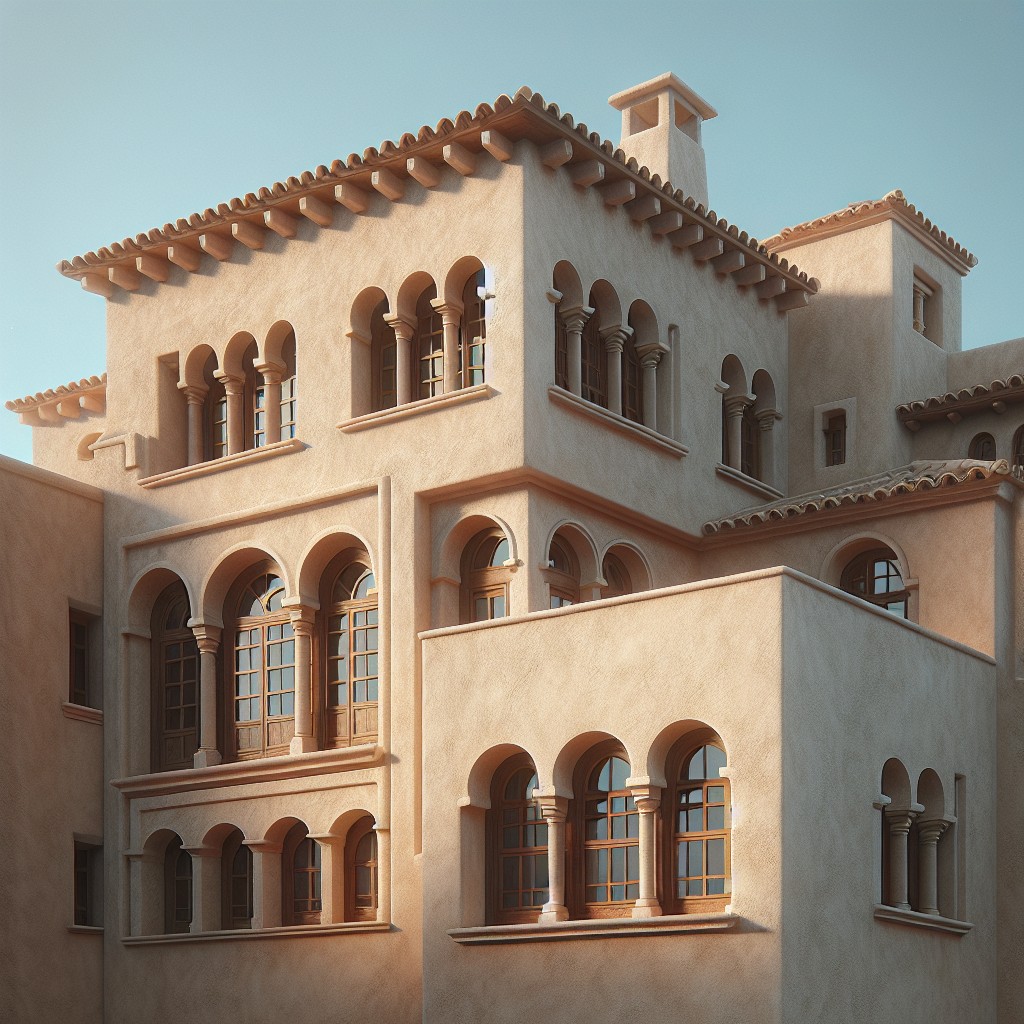
Stucco offers a rough, rustic appeal, directly mirroring the quintessential charm of Spanish architecture. It’s the perfect material choice for homes that already incorporate Spanish design elements. Applying stucco for your window trim requires a professional touch due to its unique texture and application process.
Here are a few considerations when opting for stucco window trim:
- 1. Paint or No-Paint: Bare stucco trim has a unique, rough-hewn look that can be quite impactful. However, it can be painted for a more finished appearance. Choose earthy shades like terra cotta, warm beige, or dusty rose to stay true to Spanish style homes.
- 2. Care & Durability: Stucco is a robust material that can withstand the test of time if cared for properly. It’s moisture and crack-resistant but requires sealing to prevent water ingress.
- 3. Cost-effectiveness: Although pricier than some materials, stucco’s durability and low maintenance make it a cost-effective choice over the long term.
- 4. Complementary Styles: Stucco trims can also complement other styles like Mediterranean, Southwestern, or Tuscan, helping you weave in some Spanish flair.
Remember, the key to a successful design is synergy. Stucco window trims should blend effortlessly with your home’s overall theme. If your house exterior employs a lot of textures and earthy tones, stucco can be an ideal window trim choice.
Double Layered Window Trim

Taking the design of window trim up a notch, a double layered approach adds depth and grandeur that’s hard to achieve with a single molding. This detail involves using two separate pieces of trim stacked on top of each other to create a layered look. The core idea revolves around accentuating the pre-existing structure and enhancing its architectural beauty.
Here’s how you can create this look:
- Choice of Materials: Opt for a combination of wood and MDF. Wood gives a polished look, whilst MDF proves cost-efficient and is easier to paint.
- Design Consistency: Maintain consistency with the double layers. For instance, if you’re using a simple design for the first layer, keep the second layer simple as well.
- Proportions Matter: Ensure the two layers are proportional. If the bottom layer is larger and wider, then keep the top layer slightly smaller.
- Match it Up: Even with a layered design, the trim should match the overall aesthetic of the room. Traditional homes can benefit from ornate patterns, while modern spaces could opt for clean, minimal layers.
- Finishing Touches: Lastly, consider a decorative cap molding or coving to soften the transition between the wall and the trim.
Remember, the double layered window trim can make a bold statement, so it’s an ideal solution when you’re looking to enhance your space’s aesthetic appeal.
Bronze Finished Window Trim for a Vintage Feel
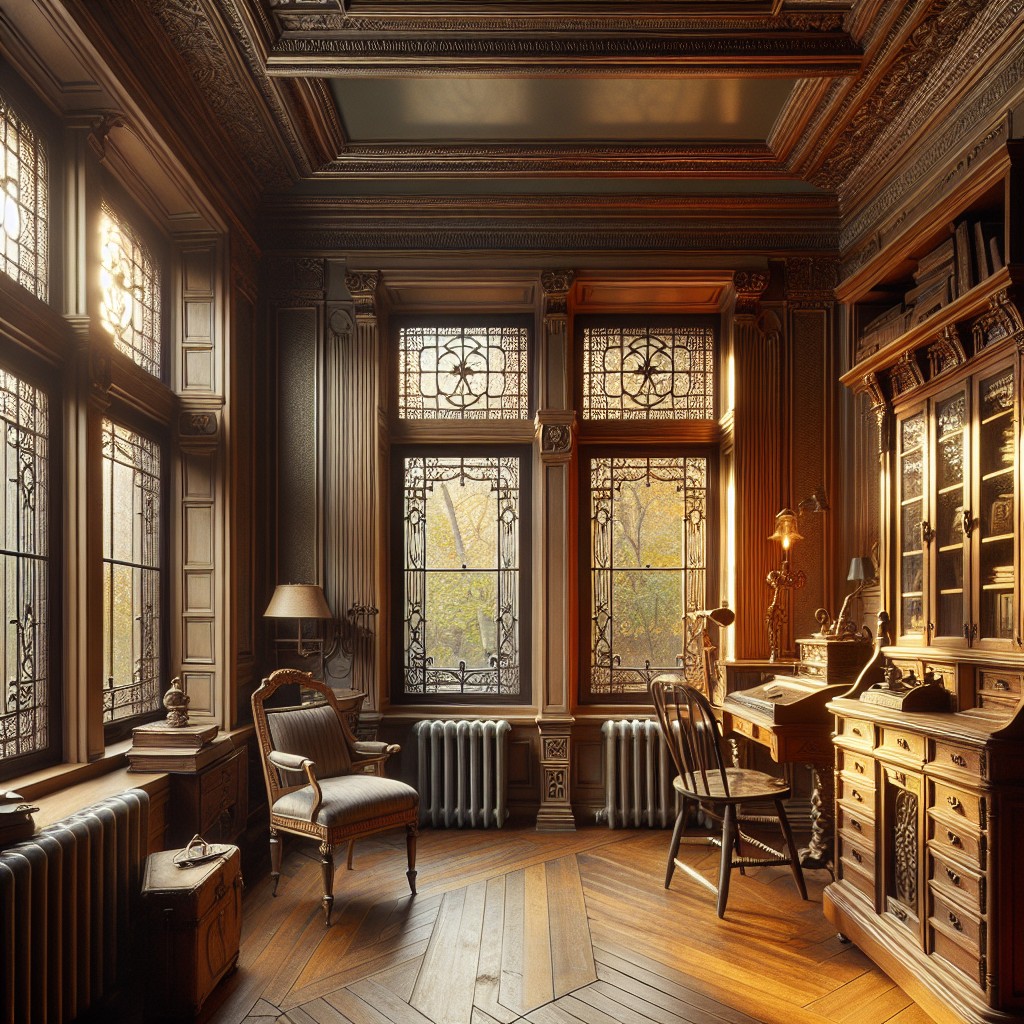
The charm of bronze finish cannot be overstated when it comes to incorporating a vintage feel into your home decor. This embodiment of sophistication and antiquity works perfectly with window trims, especially in rooms that showcase traditional, rustic, or old-country style.
1. Material Choice: Choose a trim material suitable for bronze finishing. Solid wood allows for an authentic vintage look.
2. Patina Effect: Apply a faux patina effect on the bronze finish to mimic natural oxidation. It enhances the vintage aesthetic.
3. Balance: Balance this rich, dark trim finish with lighter wall colors for a room that feels both bright and enveloped in history.
4. Decoration: Complement the bronze-finished trim with antique decorations or furniture to bring out the full effect.
5. Maintenance: Remember, this finished trim requires careful maintenance. Using a soft cloth for dusting and occasional polishing keeps the bronze gleaming.
This detailing can ingeniously transform the appearance of any room, making it cozy and appealing with a touch of vintage elegance.
Window Trim With Inlaid Tile Detailing
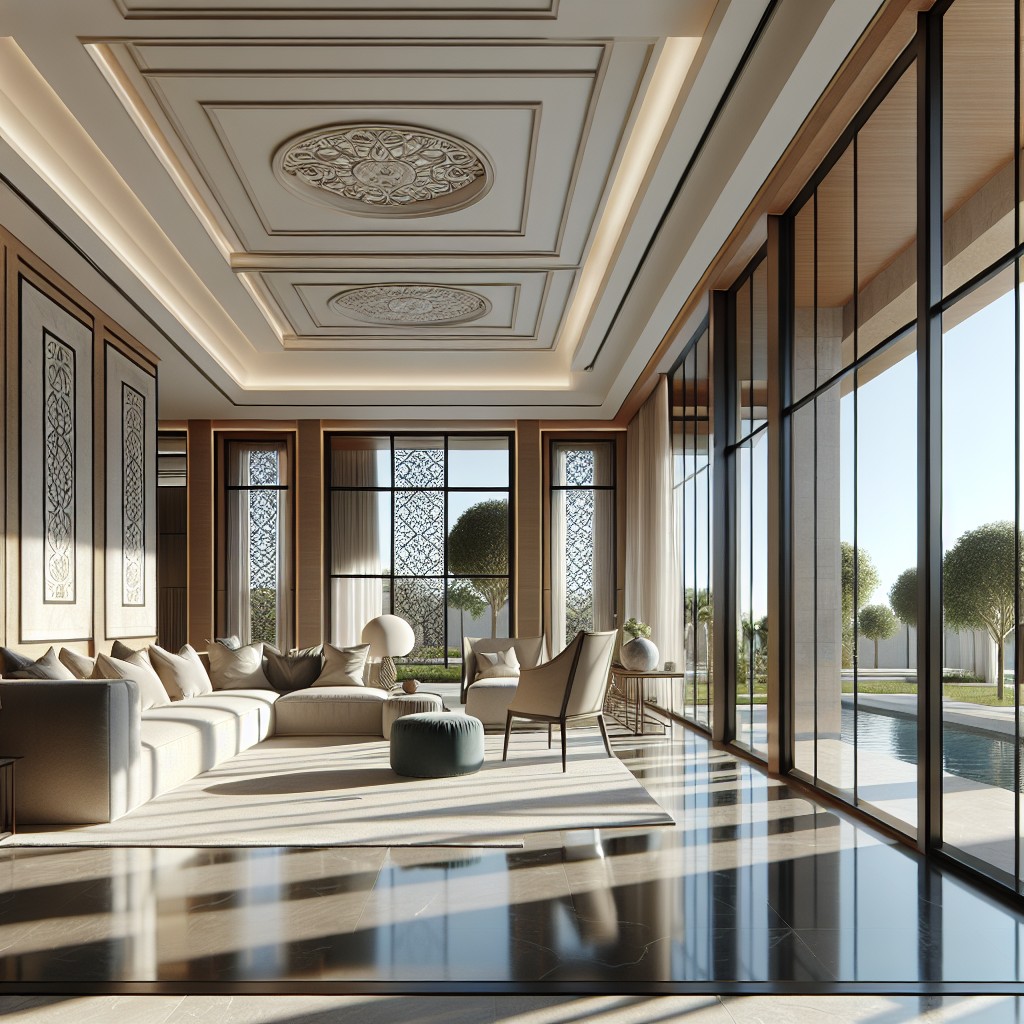
Inlaying tiles into your window trim can create a truly unique and stunning effect. This design technique incorporates elements of mosaic art, rewarding you with an exquisite focus point in the room.
1. Material selection: You can choose ceramic or porcelain tiles, however, glass or stone should also be considered for a varied texture.
2. Color and pattern: Opt for simple monochromatic schemes for a sleek modern look, or embrace vibrant hues for a burst of energy. Geometric or floral patterns can elevate the design further.
3. Professional installation: Due to its complexity, it would be best to hire professionals skilled in both mosaics and window trims, as this requires keen attention to detail.
4. Maintenance: A sealed grout is recommended to make the cleaning process easier and prolong the life of your window trim.
Try adding some artisanal touch to your window trim with inlaid tiles for a personalized accent to your home decor.
Ideas Elsewhere
- https://sugarandcloth.com/window-trim-ideas/
- https://www.finehomebuilding.com/project-guides/finish-trim-carpentry/interior-window-trim-ideas
- https://www.familyhandyman.com/list/interior-window-trim-ideas/
- https://yr-architecture.com/5-simple-modern-interior-window-trim-details/
- https://brennancorp.com/blog/interior-window-trim-options/
- https://www.soulandlane.com/modern-window-trim-3045/
